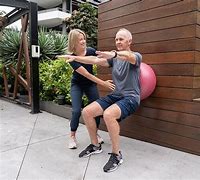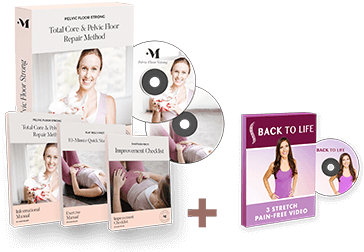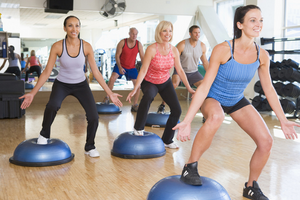How Do I Know if My Pelvic Floor Muscles Are Strong?
What Is the Pelvic Floor?
Before we can talk about the strength of your pelvic floor, let's define what exactly it is: muscles and tissues arranged like a sling across your pelvis, per the U.S. National Library of Medicine (NLM).
The pelvic floor has five main purposes, per Wright:
-
Sphincteric: The pelvic floor muscles contract to prevent leaking urine and feces and relax in order to eliminate them.
-
Support: These muscles act as a basket to support the pelvic organs, including the bladder, rectum and uterus.
-
Stability: They help stabilize your pelvis and hips.
-
Sexual: They help you achieve arousal and orgasm. Relaxing the pelvic floor is essential to allow for penetration for people assigned female at birth (AFAB). For people assigned male at birth (AMAB), the pelvic floor plays a role in getting an erection as well as ejaculating, according to the Cleveland Clinic.
-
Sump-pump: The muscles of the pelvic floor move blood and lymph through the pelvis and toward the heart.
How Do You Know if You Have a Strong or Weak Pelvic Floor?
When your pelvic floor muscles aren't up to snuff, they won't be able to perform the essential functions above, such as holding in urine. As a result, you'll likely feel as if something's amiss.
Weak pelvic floor muscles can also lead to pelvic organ prolapse, which is when "pelvic organs drop or press into or out of the vagina," per the Office on Women's Health (OASH). You may be able to see or feel this, according to OASH. It can also cause difficulty inserting a tampon.
The best way to know if you have a strong or weak pelvic floor is to measure the strength of the muscles (more on that in just a moment).
How Do You Test Pelvic Muscle Strength?
"Pelvic floor muscle strength is most accurately assessed with an internal vaginal examination conducted by a licensed physical therapist who specializes in pelvic health," Wright says.
However, there are two tests you can do at home to glean a general idea of your pelvic floor's muscle power.
1. Internal Vaginal Self-Assessment
-
Lie on your back with knees bent and one or two pillows supporting your head. Alternatively, you can lie on your side with a pillow between your knees for comfort.
-
Insert one clean index finger (with lubricant if you prefer) into the vaginal canal to the base of the middle knuckle.
-
Contract your pelvic floor (think about "stopping the flow of urine").
"A strong pelvic floor contraction will have a squeeze and an upward 'lift' where you feel some amount of tension when you try to remove your finger from the vagina," Wright says. "The ability to hold the lift for 10 seconds demonstrates good pelvic floor muscular endurance," she adds.
2. External Self-Assessment
-
Lie on your back with knees bent and one or two pillows supporting your head. Alternatively, you can lie on your side with a pillow between your knees for comfort.
-
Place your four fingers over your perineum (the area between the vaginal canal and the rectum).
-
Contract your pelvic floor as if you are stopping the flow of urine.
If your pelvic floor muscles are strong, "you should feel the area under your fingers lift and pull upward," Wright says. Also, "there should be no additional pressure toward your fingers if you are contracting correctly," she adds.
How to Strengthen Your Pelvic Floor
If you think your pelvic floor may be weak, Wright recommends trying one of the following pelvic floor-strengthening exercises:
1. Kegels
-
Start by lying on your back in a comfortable position.
-
Lift your pelvic floor as if you are stopping the flow of urine.
-
Start by contracting for 2 seconds and relaxing for 2 seconds. Aim for 3 sets of 10 to 15 repetitions and increase duration to 10-second holds.
-
If you find yourself fatiguing, try performing less repetitions, or perform each set at different times of the day, i.e. morning, afternoon and evening.
-
As this exercise gets easier, perform while sitting or standing.
2. Adductor Ball Squeeze
-
Lie on your back or side or sit in a chair with your feet on the floor and knees bent to 90 degrees.
-
Place a soccer ball, yoga block or thick pillow between the knees.
-
Squeeze the ball using your inner thighs (adductors) and think about contracting your pelvic floor simultaneously. Hold for 3 to 5 seconds.
-
Aim for 3 sets of 10 to 15 repetitions.







































